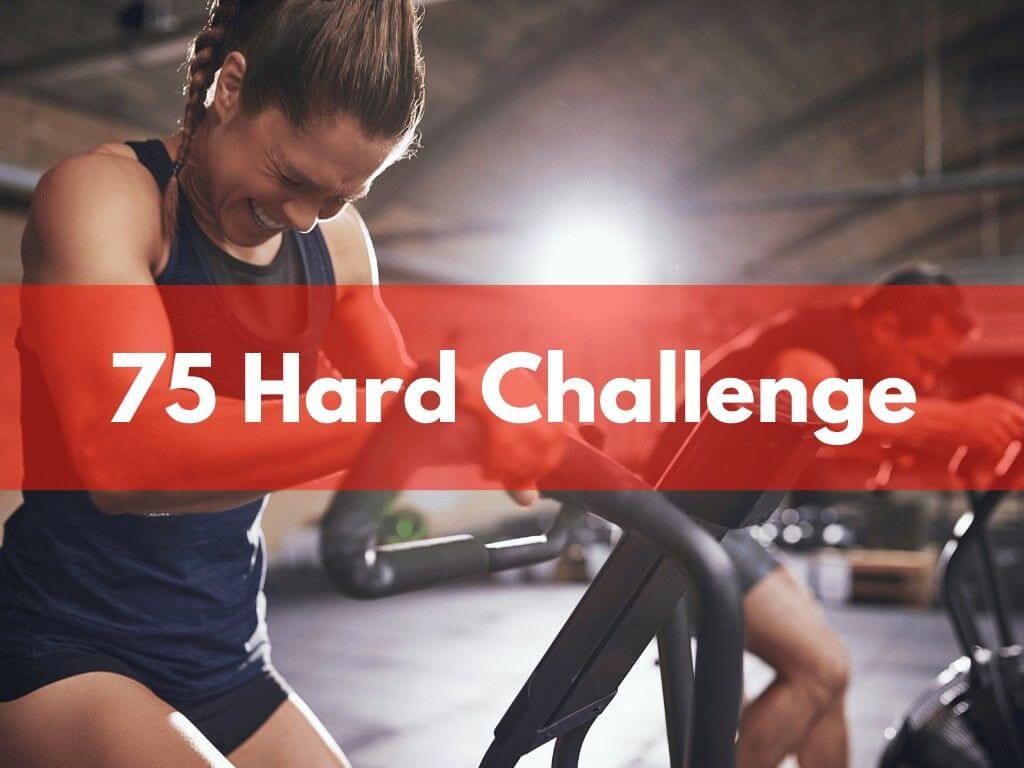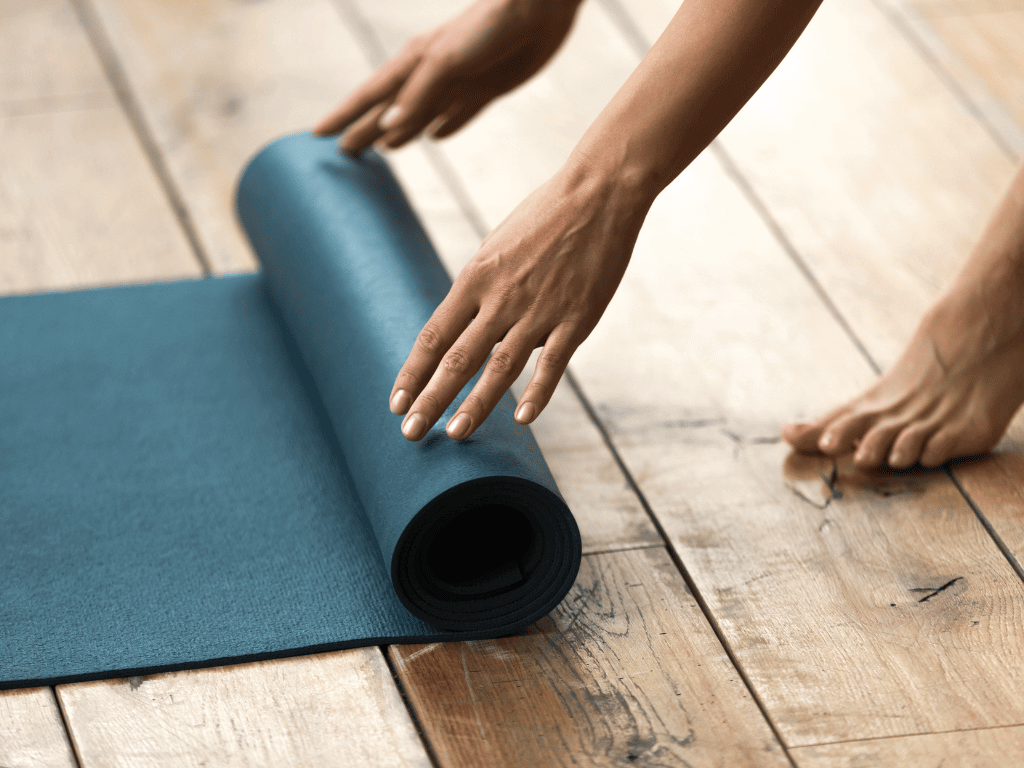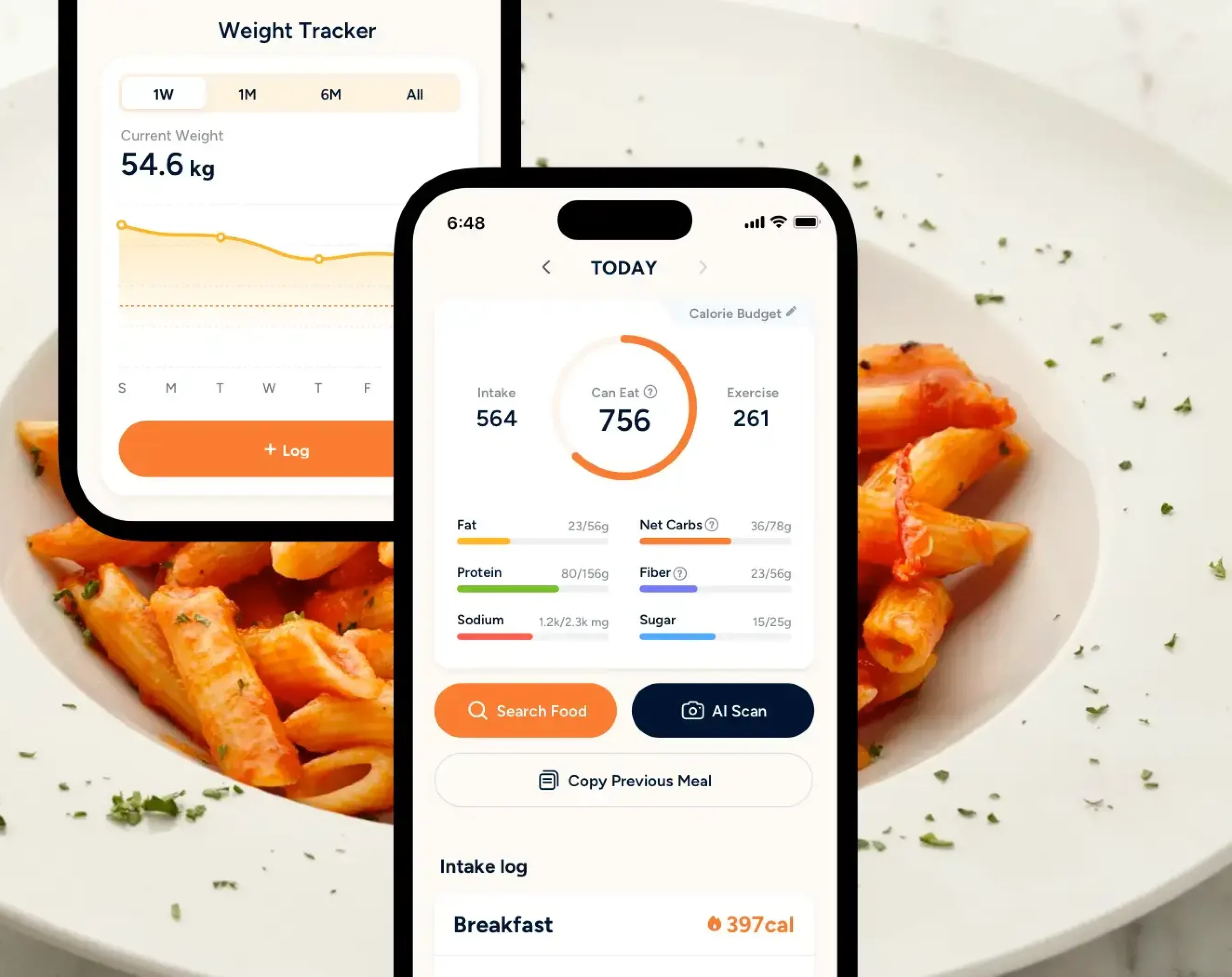People are often too focused on what the scale says. The belief is that your weight on the scale is the definite indicator of whether you are underweight, healthy, overweight, or obese. However, the reality is that weight alone tells you very little about your actual health status. Body composition plays a larger role in determining your physical health status.
From the ratio of muscle, fat, and bone to other tissues, it offers a detailed picture of your overall wellness, performance, and appearance. Therefore, in this article, we shall explore everything you need to know about body composition and the strategies you can use to improve it.
Key Takeaways
- The proportion of fat, muscle, and bone in your body provides more insight into health, fitness, and disease risk than simply tracking body weight or BMI.
- Genetics, diet, hormones, and physical activity all influence your muscle-to-fat ratio.
- Methods like DEXA scans, bioelectrical impedance analysis (BIA), skinfold measurements, and hydrostatic weighing help track fat mass and lean mass accurately.
- For optimal health, men should maintain 14–24% body fat and women 21–31%.
- Sustainable improvements come from balanced nutrition, regular strength and cardiovascular training, and adequate quality sleep.
What Is Body Composition?
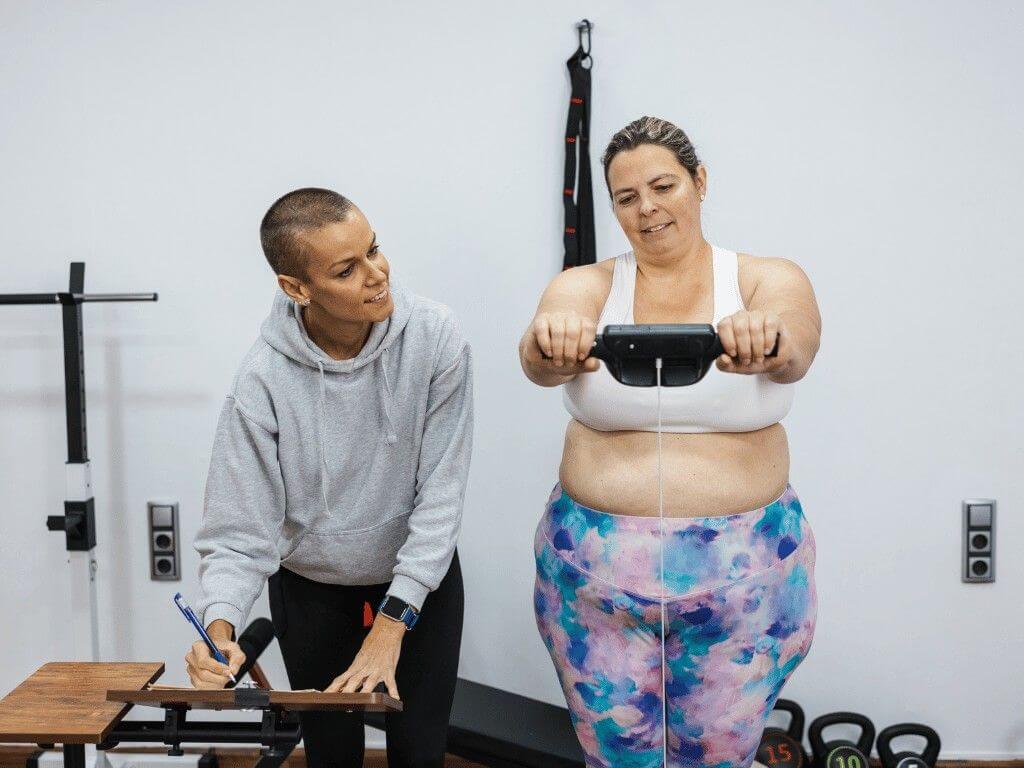
Body composition refers to the proportion of different tissues that make up your total body weight, which are fat, muscle, and bone. It is primarily categorized as body fat percentage and lean body mass (LBM) percentage, which is the ratio of lean mass to fatty mass [1].
Lean mass consists of muscle, bone, skin, internal organs, and body water, whereas fatty mass consists of subcutaneous fat, visceral fat, and the intra-abdominal fat.
Why Is Body Composition Important?
Body composition is a more accurate measure of physical health compared to traditional metrics like body mass index (BMI) or body weight. For example, two people can have the same height and body weight, but they may look different and have different health issues due to their body composition.
According to various research and studies, body composition is related to your cardiovascular health and can provide insights as to whether you may be at risk of cardiovascular disease, high blood pressure, elevated cholesterol levels, or metabolic syndrome [2], [3].
Individuals with higher muscle mass and lower body fat percentage typically experience reduced risk of chronic diseases, improved metabolic function, and enhanced quality of life as they age.

Smarter Nutrition Tracking
Track calories and over 100 other nutrients all in one place.
Download Eato For FreeFactors that Affect Body Composition
Changes in body composition can be a result of various factors, including physical activity, diet, hormonal changes, and genetics.
1. Genetics
Several studies have shown that genetics can influence obesity and body fat distribution. It is estimated that the heritability of BMI is between 40 to 80% [4]. Certain genes may affect metabolism, appetite regulation, fat storage, and how efficiently your body burns calories.
For instance, variants of the FTO gene have been associated with higher body mass and fat accumulation [5].
2. Diet

The macronutrient composition and calorie content of your diet significantly influence body fat and lean mass. A 2023 study found that diets that consisted of sugary foods, fast foods, and processed foods were more likely to have higher body fat percentages and lower lean muscle mass. Middle-aged men who adhered to a “Mediterranean-like” diet also reported lower BMI, body fat, and lean mass [6].
Caloric balance ultimately determines whether fat mass increases or decreases, but macronutrient composition influences how those calories are partitioned between muscle and fat tissue. Diets higher in protein and lower in processed carbohydrates generally promote more favorable body composition changes.
3. Hormonal changes
Hormones like leptin, insulin, sex hormones, and growth hormones play a role in regulating metabolism, hunger, and fat storage [7]. Leptin is a hormone that is produced by fat cells and helps your body to use and store energy. Being of a higher weight would mean that the level of leptin would be higher.
Insulin is a hormone that helps regulate carbohydrates, metabolize fat, and reduce blood sugar after a meal. Being insulin-resistant can lead to fat accumulation and muscle loss.
4. Physical activity
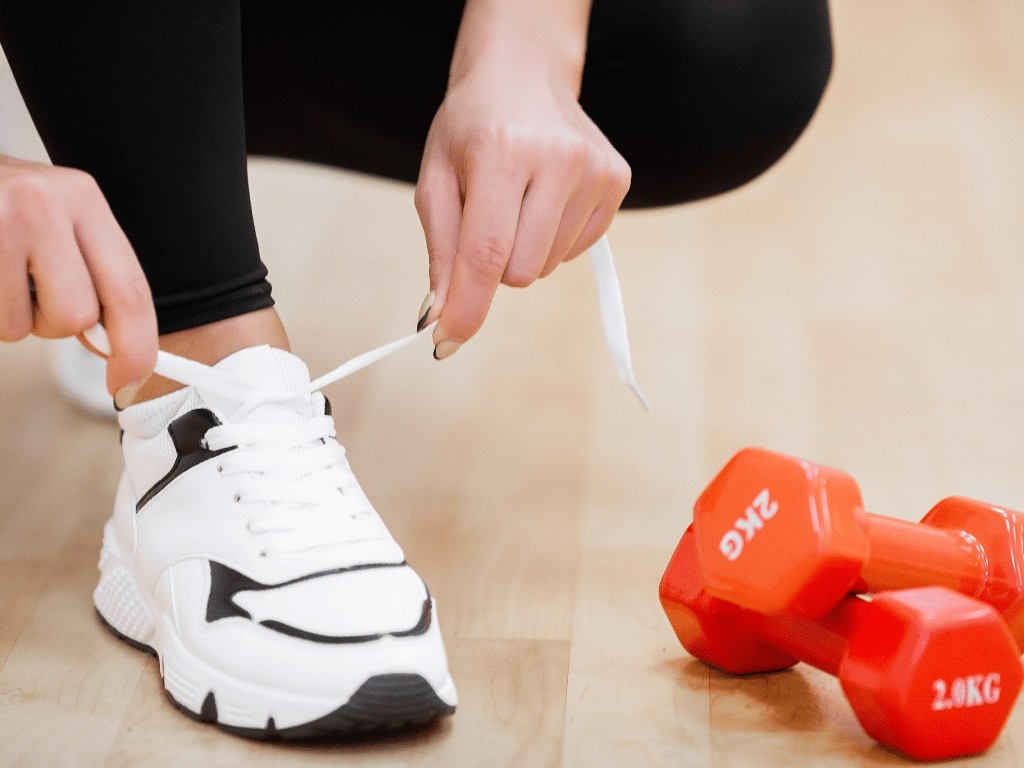
Regular physical activity is essential for getting a healthier body composition. Resistance training in particular helps increase lean body mass while decreasing fat [8].
The type, intensity, and frequency of exercise dramatically impact body composition outcomes. High-intensity interval training (HIIT) and strength training prove particularly effective for improving body composition by simultaneously promoting muscle growth and fat loss through various physiological mechanisms.

Weight Loss Has Never Been Easier
Get accurate nutrition info instantly. Keep track of your progress.
Download Eato For FreeHow to Measure Body Composition?
There are a few methods to go about measuring body fat percentage and overall body composition. The most common methods are dual-energy X-ray absorptiometry (DEXA) scan, anthropometry, nthropometry, body density, bioelectric impedance analysis (BIA), and body density test [9].
It is a part of body composition analysis to help individuals understand the ratio of muscles to fat in their bodies.
a) DEXA Scan (Dual-Energy X-ray Absorptiometry)
The DEXA Scan is the most popular method used for body composition measurement, providing a detailed analysis of fat mass, lean mass, and bone mineral density with high precision and accuracy. This medical-grade technology uses low-dose X-rays to differentiate between different tissue types throughout the body.
DEXA scans offer regional analysis, showing exactly where fat and muscle are distributed across different body segments. This information proves valuable for identifying visceral fat accumulation, muscle imbalances, and changes over time with remarkable precision (+/- 1-2% accuracy).
The procedure involves lying still on a scanning table for 10-20 minutes while the DEXA machine passes over your body. Most facilities require fasting for 2-4 hours before the scan and wearing minimal clothing without metal objects for optimal accuracy.
b) Bioelectrical Impedance Analysis (BIA)
BIA devices measure body composition by sending weak electrical currents through the body and analyzing resistance patterns. Muscle tissue, which contains more water and electrolytes, conducts electricity better than fat tissue, allowing estimation of body composition percentages.
Modern BIA devices range from simple handheld units to sophisticated multi-frequency analyzers used in clinical settings. Higher-end devices provide more accurate results, but all BIA measurements can be influenced by hydration status, recent food intake, and exercise timing.
For best results with BIA, maintain consistent testing conditions, including hydration status, time of day, and recent physical activity. While less accurate than DEXA, quality BIA devices provide reasonable estimates for tracking changes over time when used consistently.
c) Skinfold Measurements (Anthropometry)
Skinfold calipers are a widely accessible method used to estimate body fat percentage by measuring the thickness of subcutaneous fat at specific sites on the body (eg, triceps, abdomen, thigh). These measurements are then plugged into formulas (like the Jackson-Pollock equations) to estimate overall body fat.
While cost-effective and portable, the accuracy of skinfold measurements heavily depends on the skill of the person performing the test. When done by a trained professional using standardized protocols, skinfold tests can offer reasonably accurate estimates, typically within ±3–4% of more advanced methods.
d) Hydrostatic Weighing (Body Density Test)
Underwater weighing, also known as hydrostatic weighing, uses body density to determine body composition. The difference in underwater weight can be used to measure body fat percentage since muscle is denser than water, and fat tissue is less dense.
With an accuracy range of roughly +/- 2%, this technique is regarded as the gold standard for body composition testing. However, most people can’t use it because it requires specialized equipment, a water tank, and a qualified technician.
The test requires participants to stay motionless underwater and expel all air from their lungs, which some people find frightening or uncomfortable. Although hydrostatic weighing is accurate, it is primarily used in research or athletic performance contexts.
How Much Overall Body Fat Percentage Should I Have?
An ideal body fat percentage that you should attain is dependent on factors like age and gender. Rather than aiming for a whole figure, it’s much better to aim for a range.
Generally, women need more body fat than men to stay warm, protect the internal organs, and regulate their hormones. Here is a body fat percentage chart from the American Council on Exercise (ACE) for reference [10]:
| Classification | Women (% fat) | Men, (% fat) |
| Essential fat | 10-13% | 2-5% |
| Athletes | 14-20% | 6-13% |
| Fitness | 21-24% | 14-17% |
| Average | 25-31% | 18-24% |
| Obese | 32% and higher | 25% and higher |
Based on this chart, it can be understood that men require an estimated 2-5% essential fat while women require an estimated 10-13% essential fat, much higher than men, due to reproductive and hormonal requirements.
These essential fat levels represent absolute minimums below which health complications can occur, including hormonal disruptions, compromised immune function, and impaired thermoregulation.
For optimal health, men should try to maintain an average body fat percentage between 14-24%. For women, the ideal body fat percentage to maintain would be between 21-31%. These ranges support normal hormonal function, adequate energy stores, and protection against age-related muscle loss while minimizing disease risk factors.
What Body Fat Percentage Is Considered Obese?

To be considered obese, your body fat percentage would have to exceed 25% or higher for men and 32% or higher for women. Being obese comes with significantly increased health risks such as cardiovascular disease, type 2 diabetes, metabolic syndrome, and other chronic conditions.
At this point, excess body fat would begin to impact metabolic health and increase inflammation throughout your body. However, it’s worth noting that fat distribution also plays a large part.
Individuals can have body fat percentages within normal ranges but carry excessive visceral fat, particularly common in sedentary individuals or those with poor dietary habits.
What Body Fat Percentage is Healthy?
Healthy body fat percentages vary by gender due to biological differences in fat distribution and essential fat requirements. For men, having a total body fat between 14-17% would be healthy, providing adequate energy stores and hormone support without excess health risks.
Women’s healthy ranges generally fall between 21-24%, reflecting higher essential fat needs for reproductive health and hormonal balance. These ranges support optimal metabolic function, adequate energy reserves, and protection against age-related health decline.
For athletes, a healthy body fat percentage is considered to be below 13% for men and below 20% for women at the lower ends of the healthy ranges or slightly below during competitive seasons. However, its worth noting that in the long term, having extremely low body fat levels may lead to compromised immune function, hormone production, and long-term health risks.
How to Improve Body Composition?
You can improve your body composition by focusing on the basic principles of nutrition and regular physical activity.
Here are the proven ways to help you do so:
1. Diet
Whether it’s for muscle gain, fat reduction, weight loss, or weight gain, the biggest emphasis is always on what you’re eating [11].
Consider the type of food that you are eating and the number of calories in it. If you’re trying to gain weight, then you might probably want to focus on consuming calorie-dense foods like fatty meats, avocado, nuts, and seeds.
For weight loss, you want to focus on eating whole, unprocessed foods that are rich in essential nutrients. They don’t necessarily have to be low in calories as long as you maintain an overall calorie deficit.
For muscle gain or fat reduction, you need to consume more protein. Your body tends to burn calories while processing protein. It also aids in building muscle mass.

Weight Loss Has Never Been Easier
Get accurate nutrition info instantly. Keep track of your progress.
Download Eato For Free2. Exercise
Engaging in physical activity is also another component of improving your body composition. Exercise, like weight training or resistance training, can help with muscle growth.
At the same time, cardiovascular exercises can also help with fat loss if that is your goal. The general recommendation is to exercise for 150 to 250 minutes per week if you are looking to lose weight.
3. Get enough quality sleep
Adults should aim for 7-9 hours of quality sleep each night. Quality sleep directly impacts body composition through hormonal regulation, recovery processes, and appetite control.
Poor sleep increases cortisol levels and disrupts appetite-regulating hormones like leptin and ghrelin, leading to increased hunger and cravings for high-calorie foods [12].
Establishing consistent sleep schedules and optimizing the sleep environment can help to support better body composition outcomes.
The Final Takeaway: Determining Body Composition
By understanding what body composition is, you will not only be able to better understand your own body composition, but you will also be able to take specific health and fitness approaches to improve it. The best way to make long-term body composition improvements is to focus on sustainable lifestyle changes. This means combining exercise, such as strength training and cardio, with adequate nutrition.
If you’re unsure of where to start, the Eato app is the perfect tool to help you log your meals, monitor your nutritional intake, and allow you to optimize your diet for better muscle building and fat loss results. Try it today for free!

Smarter Nutrition Tracking
Track calories and over 100 other nutrients all in one place.
Download Eato For Free
